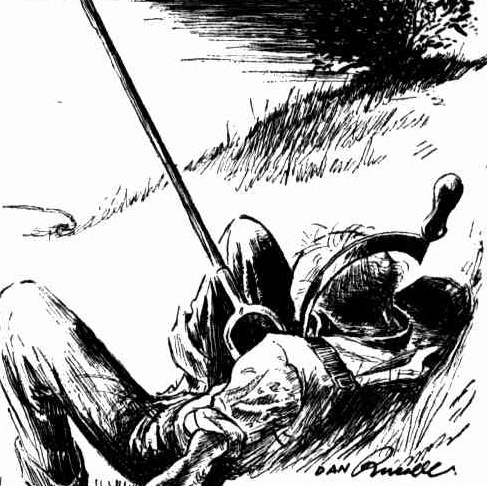
On February 14, 1945, the body of Charles Walton was found brutally murdered on a farm named The Firs. Why was he murdered and was witchcraft actually involved in his death?

Who Was Charles Walton?
Walton was a recluse and worked as a hedger at age 74. He lived in a small cottage in Lower Quinton. Neighbors described him as a silent, bent old man who loved to talk to the birds. [1]
How Was He Murdered?
An article printed in 1950, five years after the murder, described the scene:
“His injuries were hideous. The sickle blade of a trouncing hook had ripped his throat away and stuck, still gleaming, in the wounds. His thin old arms were cut where he had tried to defend himself. His face, with a stubble of white beard and eyes wide with fright, was twisted wildly. And his body was pinned deliberately to [the] earth by the prongs of a hayfork.”
Incidentally, the murder took place under an oak tree. a tree that was sacred to the druids. [2]
Witchcraft Comes To Play
How did witchcraft enter into the murder of Walton? As investigators were checking out the scene of the murder, a Superintendent Spooner held a book in his hands, “Folk Lore. Old Customs and Superstitions of Shakespeareland.” And wouldn’t you know it, the investigators were standing on what was labeled as Shakespeareland.
There was an entry in the book:
“In 1875… a young man killed an old woman named Ann Turner with a hayfork, because he believed she had bewitched him.”
So, this was not the first pitchfork murder in the vicinity. And it wasn’t the second pitchfork murder, either. There had been another one mentioned in a book titled “Warwickshire” by Clive Holland:
“A man named John Haywood who stabbed to death with a pitchfork an old woman, exclaiming that he would kill all the 16 witches in Long Compton… his mode of killing was evidently a survival of the ancient Anglo-Saxon custom of dealing with witches by means of sticking spikes into them.” [3]

The Rumors
What made the inspector on the scene take a look at the books on local witchcraft and customs? Rumors.
When the police interviewed the locals, they found some who whispered that Walton had the evil eye. Back then, it was the same thing as calling another person a witch.
It didn’t matter if Walton actually did practice any sort of witchcraft or wizardry. All that mattered was that someone didn’t like the way the man looked and decided to condemn him. And that simple accusation may have been what got Walton killed. [4]
Sacrificial Killing
By 1950, people were still investigating the murder even though the police had already moved onto other, more solvable murders.
It was during this time that Dr. Margaret Murray, a leading authority on witchcraft, decided to investigate the ritual aspects of Walton’s murder.
According to Dr. Murray’s research, the use of the pitchfork was very symbolic. Brooms represented women witches and the pitchfork represented men witches.
The date of the murder was also relevant because February 14th was actually February 2nd on the old calendar. It was the day set aside for ritual sacrifice and a time to spill blood on the fields to return fertility to the earth. [5]

Case Reopened
After 15 years had passed, the St. Valentine’s Day Witchcraft Murder case was reopened. It was reported that Walton’s watch was found in what used to be his back garden (his cottage was long gone).
The police had hoped the watch would bring forth more evidence into the case, but, sadly, nothing new was ever uncovered.
The case of Charles Walton’s death continues to intrigue us to this very day, although there is very little hope of ever solving it. [6]

